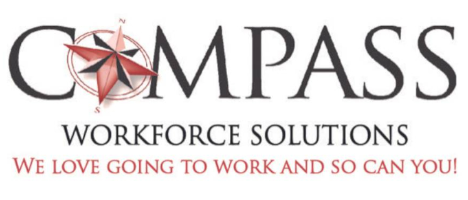In today’s fast-paced environment, achieving organizational success requires more 
Back in July, we explored how we could go about Building our All-Star High-Performing Team through the use of Five Key Transformational Tools. One of the essential tools in our toolkit for building this structure is goals. When they are designed in a SMART way (i.e., when Specific, Measurable, Achievable, Relevant and Time-bound), goals help us to keep everyone focused. For example:
- Increase production output by 20% over the next quarter.
- Launch the new product line by the end of Q4.
- Achieve a customer satisfaction rating of 90% or above.
Goals, as they cascade across the organization, are the connective tissue that ties our team’s actions to our company’s vision. They define where we want to be by a specific time, and what success looks like. And while goals create focus and alignment around our “destination,” their impact can be further supercharged by pairing them up with Key Performance Indicators (KPIs).
KPIs – How are they different from goals
Though often used interchangeably, KPIs and goals play distinct roles in helping us work effectively and stay on track.
While our goals mark the destination, KPIs are the “mile markers” along our journey toward these goals. KPIs help us measure progress, track performance, and make sure we’re on the right path. These are measurable values that show how well we’re doing against strategic objectives. For example:
- Number of units produced per hour.
- Percentage of on-time deliveries.
- Employee turnover rate.
Goals are where we want to go, and KPIs are the indicators that tell us if we’re doing the right things to help us get there. When we combine goals with KPIs, we form a roadmap that gives everyone in our company both direction and accountability.
Why We Need Both KPIs and Goals
- Clarity of Purpose – Having both goals and KPIs lets each of us see not only the ultimate destination but also what success looks like day-to-day. Goals provide the big picture, while KPIs break it down into specific, measurable steps. Without this clarity, we risk focusing on tasks that may feel productive but don’t truly advance our mission. Imagine our production team aiming to increase output by 20% without KPIs. Without tracking output per hour, downtime issues, or machine efficiency, it would be hard to see if our efforts are moving us forward. KPIs give us real-time insight, helping us focus on what really matters and giving early warnings of where course-correction or further action is needed.
- Accountability and Ownership – KPIs and goals drive accountability by setting clear expectations. Our employees and teams know not only what we’re aiming for (goal) but also how we’ll be measuring progress (KPI), and how their role contributes to that progress. As such, it becomes easier for employees to take ownership, make proactive improvements, and stay aligned with set objectives. KPIs also allow our managers to manage performance by providing visibility into individuals’ and teams’ activities and provide our leaders with a clear view of where the business is heading. For example, if our sales team’s goal is to increase revenue by 30% this year, KPIs like the number of calls made per day, conversion rate, or average deal size give each of our team members a clear path to contribute to that goal.
- Alignment Across Teams – When our goals and KPIs are aligned across our company, they ensure that all departments work together in harmony. This alignment reduces the chance of conflicts, where teams end up pulling in different directions, or duplicate efforts. Let’s assume we are aiming to increase customer satisfaction by 25% by end of Q1 and we incentivize our sales team solely on the number of sales closed, while the customer service team is measured on call resolution time. This may lead to our sales team pushing for quick sales even if it means compromising customer experience, creating tension between our two groups as they prioritize different metrics to achieve their individual goals. By setting shared goals with well-aligned KPIs, we can work together more cohesively company-wide.
- Motivation and Engagement – Seeing progress toward our goals through well-defined KPIs builds momentum and motivates us to keep going. Tracking our progress gives a sense of accomplishment; it keeps us and our teams engaged and focused by highlighting real-time achievements, and making the journey to long-term goals feel less daunting. For example, if our goal is to reduce product defects by 50% in six months, it might feel overwhelming to our production teams without establishing clear smaller, measurable steps. KPIs like daily defect rates or number of quality checks per shift allow us to celebrate small wins along the way, fueling our teams’ drive to reach the larger goal.
Final Thoughts
Goals are essential in setting a clear destination for our company, our teams and our employees. When we pair goals with relevant and aligned KPIs, we not only have clarity of destination but also a roadmap for how to get there and a way to assess progress along the way. Together, they turn conflict and confusion into accountability and clarity.
Ultimately, establishing both goals and well-aligned KPIs for our business, teams and individual employees isn’t just about hitting targets. It’s about building strong, unified teams that understand their purpose, measure their impact, and celebrate small successes along the way. And with both goals and KPIs in place, we can focus less on managing chaos and more on achieving meaningful, measurable success.
If you want to learn more about the transformative power of goals and KPIs and how to leverage them to drive hew hire performance, register for our free 30-minute training on the 5 Transformational Tools to Create Your All Star Team scheduled for November 14, 2024!








